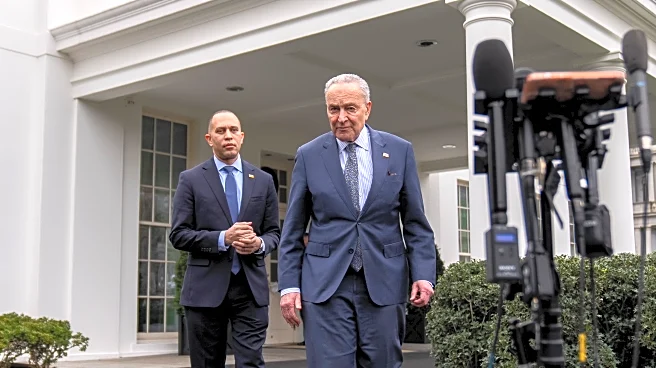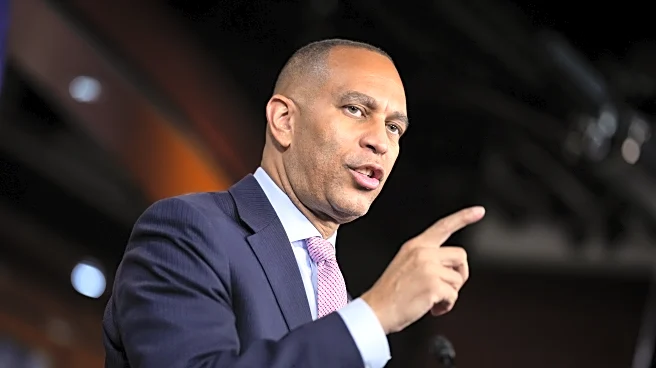What's Happening?
President Trump has issued a warning about potential mass layoffs of federal workers if the government shuts down. The Trump administration has instructed federal agencies to prepare for significant job cuts should Congress fail to reach a deal to prevent the shutdown. This move marks a departure from the usual practice of furloughing employees during shutdowns. Historically, during the 2013 shutdown, approximately 850,000 federal employees were furloughed. The current situation arises as lawmakers struggle to negotiate a resolution, with the deadline for government funding looming. The Office of Management and Budget has released a memo indicating the administration's readiness to proceed with layoffs, increasing pressure on Congress to avert the shutdown.
Why It's Important?
The potential mass layoffs of federal workers could have significant implications for the U.S. economy and public services. A government shutdown would disrupt various federal operations, affecting services that millions of Americans rely on. The threat of permanent job cuts adds a layer of uncertainty for federal employees, who typically face temporary furloughs during shutdowns. This situation could lead to long-term changes in the federal workforce, impacting government efficiency and employee morale. Additionally, the political ramifications are considerable, as the administration's stance may influence negotiations and public perception of the government's handling of budgetary issues.
What's Next?
If Congress fails to reach an agreement, the government shutdown will commence, potentially leading to the layoffs as warned by President Trump. The administration's approach may prompt reactions from political leaders and federal employee unions, who could advocate for alternative solutions to protect jobs. The situation may also influence upcoming legislative priorities and negotiations, as stakeholders seek to prevent further disruptions. The outcome of these negotiations will be closely watched, as they will determine the immediate future of federal operations and workforce stability.











